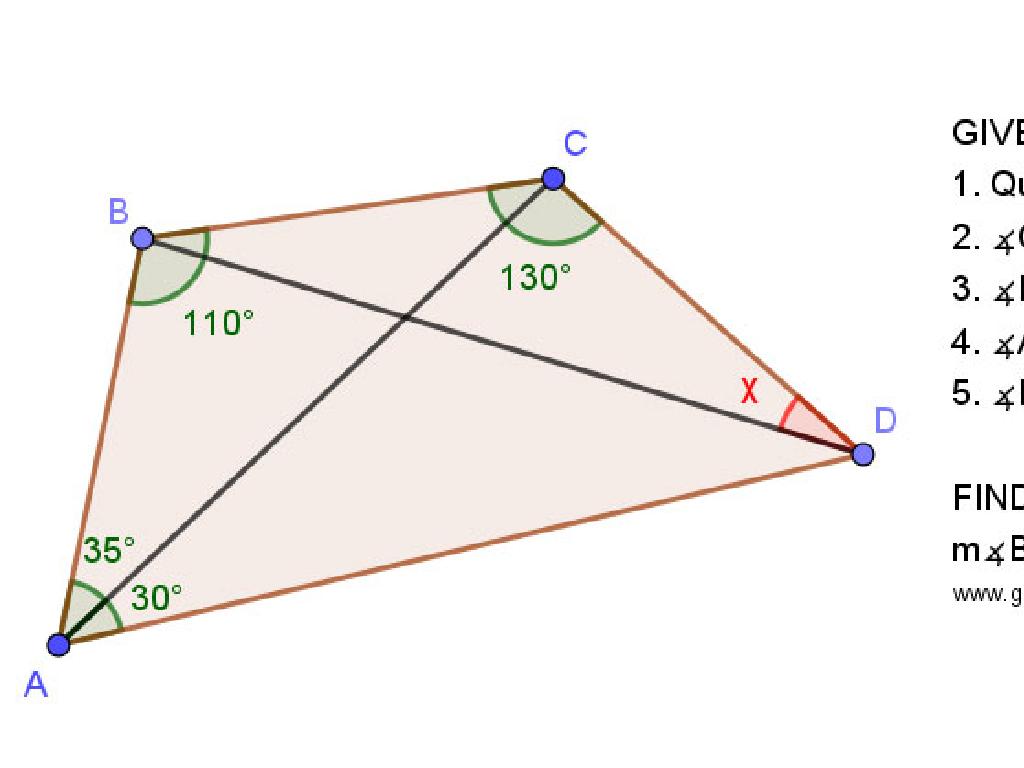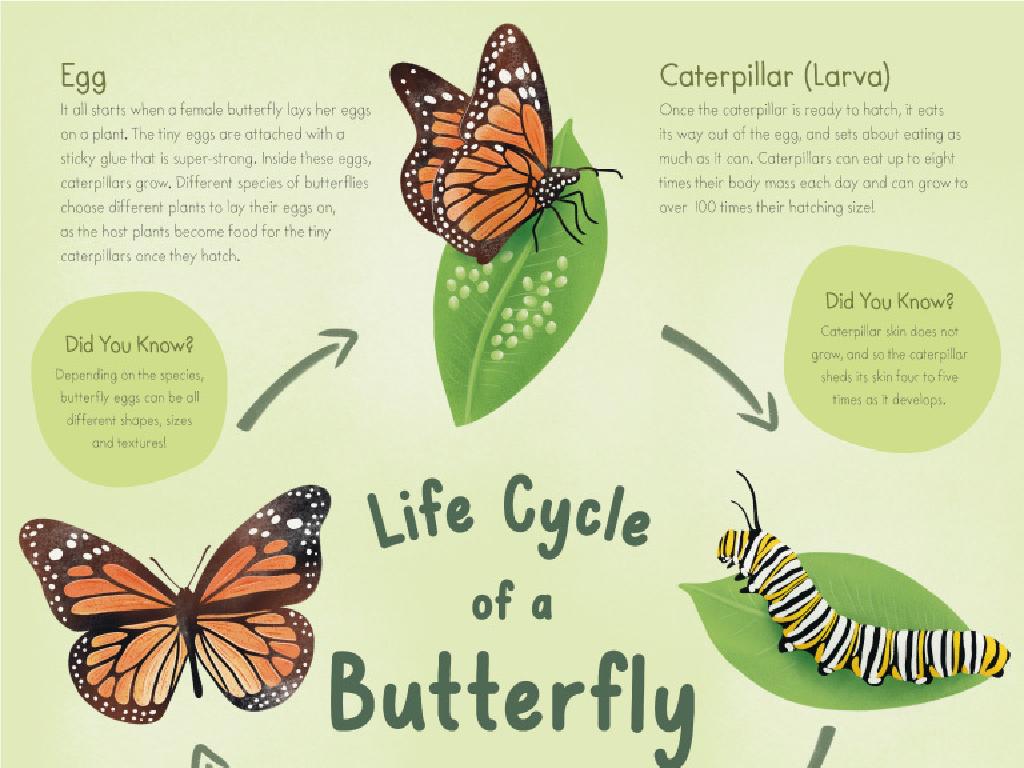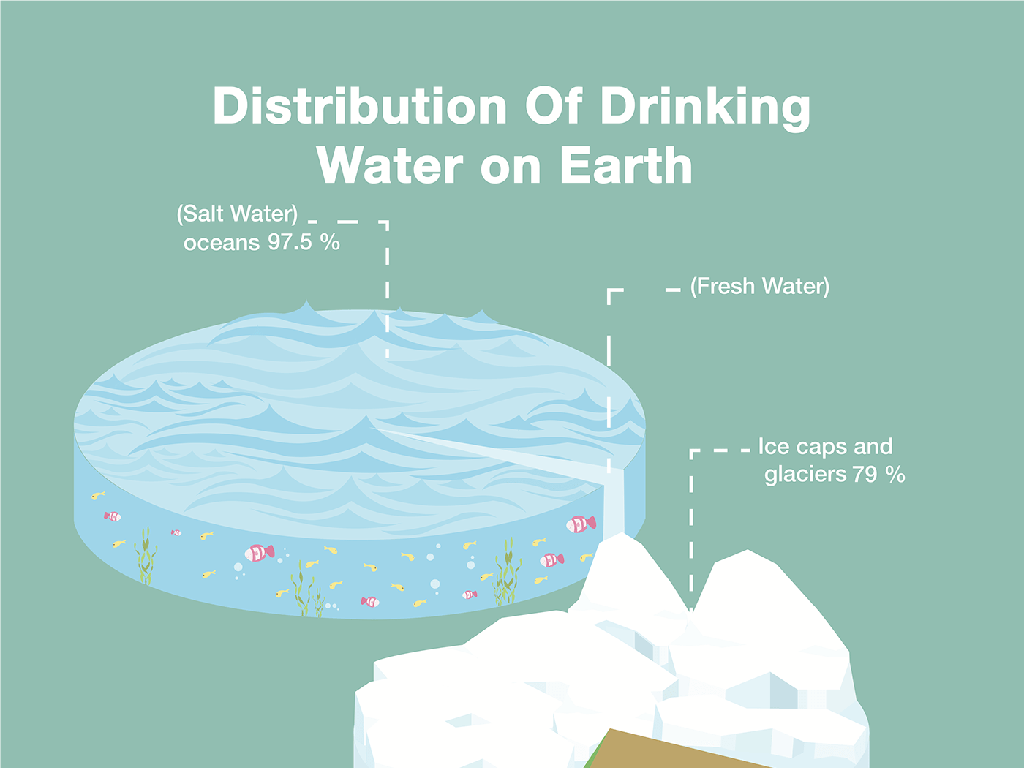Choose Customary Units Of Distance, Mass, And Volume
Subject: Science
Grade: Seventh grade
Topic: Units And Measurement
Please LOG IN to download the presentation. Access is available to registered users only.
View More Content
Customary Units of Measurement
– Understanding measurement units
– Importance of accurate measurement
Accurate measurements are crucial in science for reliable results.
– Customary units for distance
Inches, feet, yards, and miles are used to measure length or distance.
– Customary units for mass and volume
Pounds and ounces for mass; cups, pints, quarts, and gallons for volume.
|
Begin the lesson by explaining the concept of measurement and its significance in various aspects of daily life and science. Emphasize the importance of accuracy in measurement for consistency and reliability in scientific experiments. Introduce the customary units of distance, starting with the smallest (inches) to the largest (miles), and explain when to use each. Then, discuss the units of mass (pounds and ounces) and volume (cups, pints, quarts, and gallons), providing examples of when each unit might be used. Engage students with examples relevant to their experiences, such as measuring ingredients for a recipe or the distance traveled on a family trip.
Customary Units of Distance
– Inches, Feet, Yards, Miles
– Matching units to objects
– Use inches for small items, like the width of a book
– Usage scenarios for each unit
– Feet and yards for room dimensions, miles for city distances
– Practical examples
– Book width in inches, room length in feet, city distances in miles
|
This slide introduces students to the customary units of distance commonly used in the United States. It’s crucial for students to understand when to use each unit appropriately. Inches are suitable for measuring small objects, feet are often used for furniture or room dimensions, yards can apply to larger areas like fields, and miles are used for distances between locations like cities. Provide real-world examples such as measuring the width of a textbook in inches, the length of a classroom in feet, and the distance from their school to a nearby city in miles. Encourage students to think of other examples and to practice converting between these units.
Customary Units of Mass: Ounces, Pounds, and Tons
– Understanding ounces, pounds, tons
– Smallest to largest: ounces, pounds, tons
– Selecting the right mass unit
– Use ounces for light items, pounds for heavier, tons for very heavy objects
– Example: Bag of apples in pounds
– A bag of apples typically weighs in pounds
– Example: Person and car in pounds/tons
– People are weighed in pounds, cars may be weighed in tons
|
This slide aims to familiarize students with the customary units of mass used in the United States. Start by explaining the hierarchy of units from ounces for small items, pounds for everyday objects, to tons for very large items. Provide relatable examples such as a bag of apples, which would be measured in pounds, while a person’s weight is also commonly expressed in pounds. For very heavy objects like cars, tons would be the appropriate unit. Encourage students to think about the mass of items they interact with daily and what units they would use to measure them. This will help them grasp the concept of choosing the appropriate unit for different objects based on their weight.
Customary Units of Volume
– Cups, Pints, Quarts, Gallons
– Smaller to larger: 1 cup < 1 pint < 1 quart < 1 gallon
– Measure liquids accurately
– Common volume units in daily life
– Milk carton: quart, Soda can: 12 ounces, Gasoline tank: gallons
– Practice with real-world examples
– Use measuring cups to measure ingredients for a recipe
|
This slide introduces students to the customary units of volume used in the United States, including cups, pints, quarts, and gallons. Emphasize the hierarchy of these units and how they convert into each other. Provide students with everyday examples to help them visualize and understand these measurements: a carton of milk is typically a quart, a can of soda is usually 12 ounces (which is less than a pint), and a car’s tank is measured in gallons. Encourage students to think of other examples and to practice measuring liquids at home, such as when following a recipe, to reinforce their understanding of these concepts. This practical application will help solidify their grasp of volume measurement.
Mastering Unit Conversion
– Steps to convert units
– Identify the unit you have and the unit you need, then use a conversion factor.
– Practice with conversion problems
– Solve sample problems to apply conversion steps and check your understanding.
– Memory aids for conversion factors
– Create acronyms or phrases to recall common conversion factors easily.
– Understanding unit equivalence
– Grasp that different units can measure the same quantity; e.g., 1 inch = 2.54 cm.
|
This slide aims to equip students with the knowledge to convert between various units of measurement, a key skill in science. Start by explaining the process of unit conversion, which involves multiplying by a conversion factor to go from one unit to another. Provide practice problems to help students apply what they’ve learned and reinforce their understanding. Share mnemonic devices or other memory aids to help them remember conversion factors between common units. Emphasize the concept of unit equivalence and its importance in scientific measurements. Encourage students to create their own conversion problems for peer review to enhance learning.
The Importance of Accurate Measurement
– Significance of precise measurement
– Measurement in daily activities
– Cooking recipes require exact amounts for delicious results
– Measurement in professional fields
– Construction projects depend on precise measurements for safety
– Engage with measurement stories
– Share your own measurement experiences in class
|
This slide emphasizes the importance of measuring accurately in various real-world scenarios. Accurate measurement is not only a fundamental skill in science but also in everyday life and numerous professions. For instance, in cooking, the right measurements ensure the intended taste and texture of a dish. In construction, accuracy is critical for the stability and safety of structures. During science experiments, precise measurements are essential for valid results. Encourage students to actively participate in an interactive Q&A session where they can discuss and share their personal experiences with measurement, fostering a deeper understanding of the concept’s relevance.
Class Activity: Measure and Convert!
– Find classroom objects to measure
– Pair up for measurement tasks
– Work together to measure object’s distance, mass, and volume
– Convert all measurements
– Use conversion tables to change units, like inches to feet or grams to pounds
– Present findings to class
|
This interactive class activity is designed to help students understand and apply their knowledge of customary units of distance, mass, and volume. Students will work in pairs to find various items in the classroom that they can measure. They should use rulers or measuring tapes for distance, scales for mass, and graduated cylinders or measuring cups for volume. After recording their measurements, students will convert these into different customary units using conversion tables or formulas provided. Encourage them to check each other’s work for accuracy. Finally, each pair will share their findings with the class, discussing any challenges they faced during the activity. Possible items to measure include desks, books, backpacks, and containers of water. This hands-on experience reinforces the practical use of measurement and conversion in everyday life.
Lesson Recap and Homework Assignment
– Review of customary units
Distance (inches, feet, yards, miles), Mass (ounces, pounds, tons), Volume (cups, pints, quarts, gallons)
– Homework: Unit conversion worksheet
Complete the worksheet to practice converting between different units of measure.
– Emphasize consistent practice
Regular practice is key to mastering unit conversions.
– Reminder for next class
|
As we wrap up today’s lesson on customary units of distance, mass, and volume, provide students with a brief summary of the key concepts covered. For homework, assign a worksheet focused on converting between different units to reinforce their understanding. Remind students that consistent practice is crucial for mastering these concepts. In the next class, we will review the homework and clarify any difficulties encountered. Encourage students to bring any questions they have to ensure a solid grasp of unit conversions.






